Clutch size Pomacea maculata: 2,000 | ||
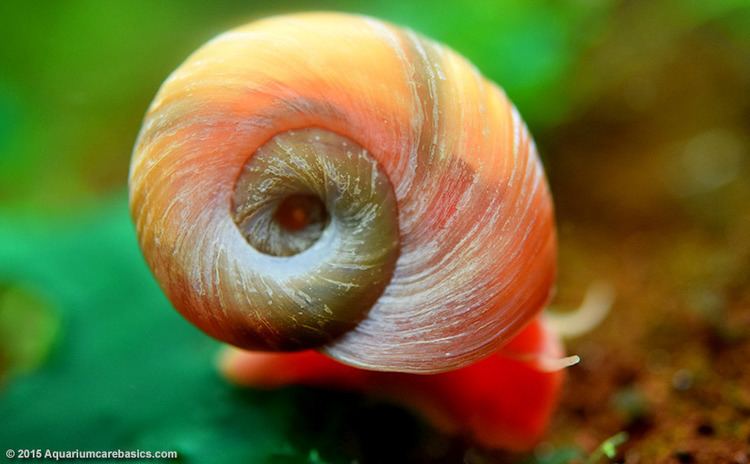 | ||
Representative species | ||
Freshwater snails mate breed mystery snail golden snail
Freshwater snails are gastropod mollusks which live in freshwater. There are many different families. They are found throughout the world in various habitats, ranging from ephemeral pools to the largest lakes, and from small seeps and springs to major rivers. The great majority of freshwater gastropods have a shell, with very few exceptions. Some groups of snails that live in freshwater respire using gills, whereas other groups need to reach the surface to breathe air. Most feed on algae, but many are detritivors and some are filter feeders.
Contents
- Freshwater snails mate breed mystery snail golden snail
- 2005 taxonomy
- 2010 taxonomy
- Neritimorpha
- Caenogastropoda
- Heterobranchia
- As human food
- Aquarium snails
- Parasitology
- References
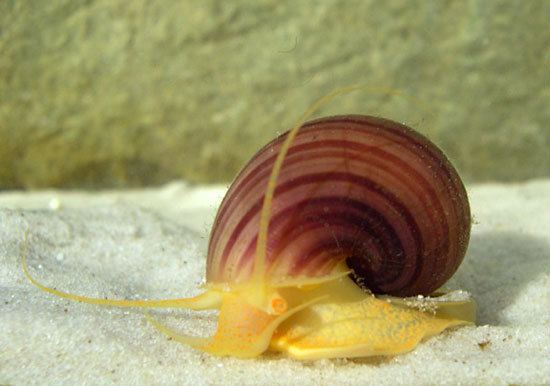
According to a 2008 review of the taxonomy, there are about 4,000 species of freshwater gastropods (3,795-3,972).
At least 33–38 independent lineages of gastropods have successfully colonized freshwater environments. It is not possible to quantify the exact number of these lineages yet, because they have yet to be clarified within the Cerithioidea. From six to eight of these independent lineages occur in North America.
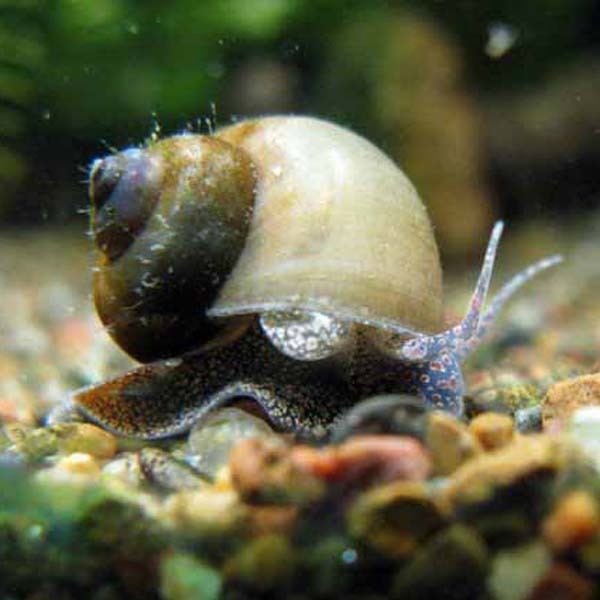
2005 taxonomy
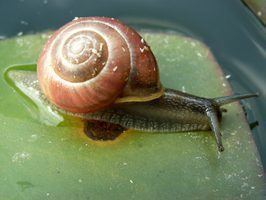
The following cladogram is an overview of the main clades of gastropods based on the taxonomy of Bouchet & Rocroi (2005), with families that contain freshwater species marked in boldface: (Some of the highlighted families consist entirely of freshwater species, but some of them also contain, or even mainly consist of, marine species.)
2010 taxonomy
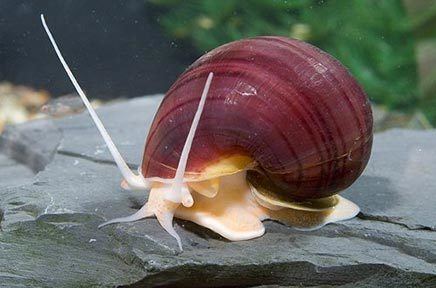
The following cladogram is an overview of the main clades of gastropods based on the taxonomy of Bouchet & Rocroi (2005), modified after Jörger et al. (2010) and simplified with families that contain freshwater species marked in boldface: (Marine gastropods (Siphonarioidea, Sacoglossa, Amphiboloidea, Pyramidelloidea) are not depicted within Panpulmonata for simplification. Some of these highlighted families consist entirely of freshwater species, but some of them also contain, or even mainly consist of, marine species.)
Neritimorpha
The Neritimorpha are a group of primitive "prosobranch" gilled snails which have a shelly operculum.
Caenogastropoda
The Caenogastropoda are a large group of gilled operculate snails, which are largely marine. In freshwater habitats there are ten major families of caenogastropods, as well as several other families of lesser importance:
Heterobranchia
Basommatophorans are pulmonate or air-breathing aquatic snails, characterized by having their eyes located at the base of their tentacles, rather than at the tips, as in the true land snails Stylommatophora. The majority of basommatophorans have shells that are thin, translucent, and relatively colorless, and all five freshwater basommatophoran families lack an operculum.
As human food
Several different freshwater snail species are eaten in Asian cuisine.
Archaeological investigations in Guatemala have revealed that the diet of the Maya of the Classic Period (AD 250-900) included freshwater snails.
Aquarium snails
In the developed world, people encounter freshwater snails most commonly in aquaria along with tropical fish. Species available vary in different parts of the world. In the United States, commonly available species include ramshorn snails such as Planorbella duryi, apple snails such as Pomacea bridgesii, the high-spired thiarid malaysian trumpet snail Melanoides tuberculata, and several Neritina species.
Parasitology
Freshwater snails are widely known to be hosts in the lifecycles of a variety of human and animal parasites, particularly trematodes or "flukes". Some of these relations for prosobranch snails include Oncomelania in the family Pomatiopsidae as hosts of Schistosoma, and Bithynia, Parafossarulus and Amnicola as hosts of Opisthorchis. Thiara and Semisulcospira may host Paragonimus. Juga plicifera may host Nanophyetus salmincola. Basommatophoran snails are even more widely infected, with many Biomphalaria (Planorbidae) serving as hosts for Schistosoma mansoni, Fasciolopsis and other parasitic groups. The tiny Bulinus snails are hosts for Schistosoma haematobium. Lymnaeid snails (Lymnaeidae) serve as hosts for Fasciola and the cerceriae causing swimmer's itch. The term “neglected tropical diseases” applies to all snail-borne infections, including schistosomiasis, fascioliasis, fasciolopsiasis, paragonimiasis, opisthorchiasis, clonorchiasis, and angiostrongyliasis.
